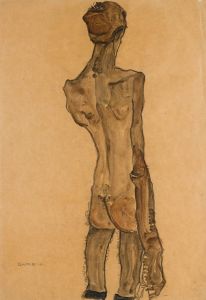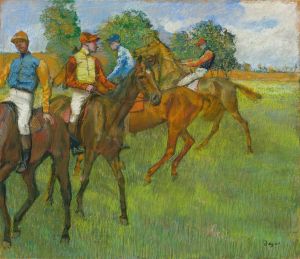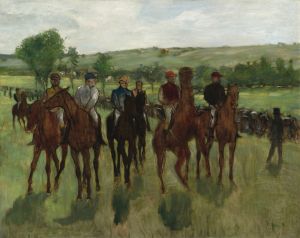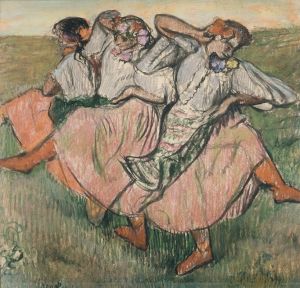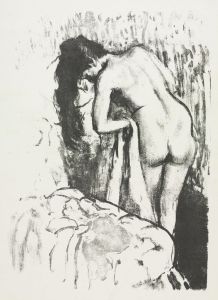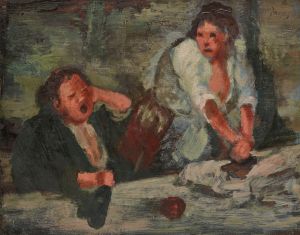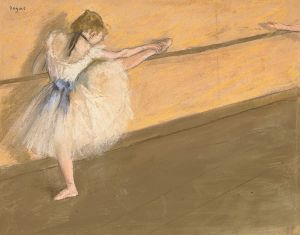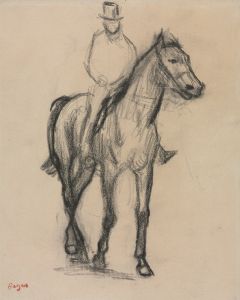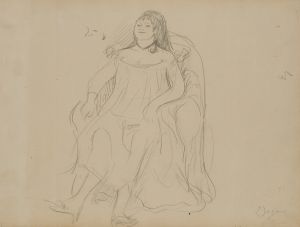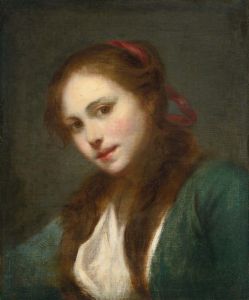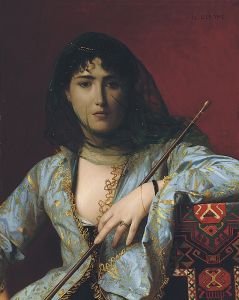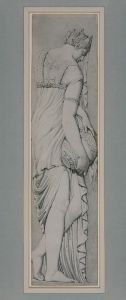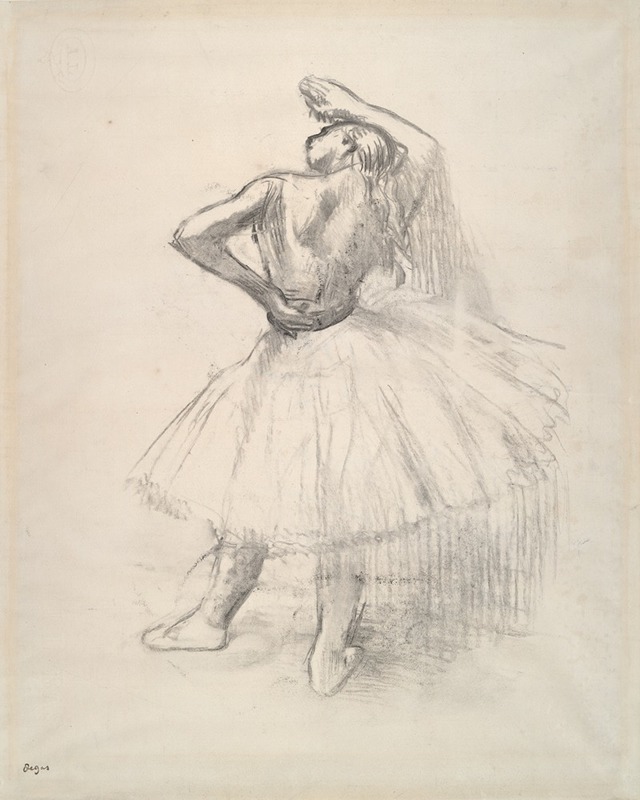
Danseuse debout, le bras droit levé
A hand-painted replica of Edgar Degas’s masterpiece Danseuse debout, le bras droit levé, meticulously crafted by professional artists to capture the true essence of the original. Each piece is created with museum-quality canvas and rare mineral pigments, carefully painted by experienced artists with delicate brushstrokes and rich, layered colors to perfectly recreate the texture of the original artwork. Unlike machine-printed reproductions, this hand-painted version brings the painting to life, infused with the artist’s emotions and skill in every stroke. Whether for personal collection or home decoration, it instantly elevates the artistic atmosphere of any space.
Edgar Degas, a prominent French artist associated with the Impressionist movement, is renowned for his depictions of dancers, capturing the grace and dynamism of ballet. One of his works, "Danseuse debout, le bras droit levé" (translated as "Standing Dancer, Right Arm Raised"), exemplifies his fascination with the ballet and his innovative approach to portraying movement and the human form.
Degas was born on July 19, 1834, in Paris, France, and he spent much of his career exploring various artistic techniques and subjects. Although he is often associated with Impressionism, Degas preferred to be identified as a realist. His work is characterized by its attention to detail, composition, and the use of light and shadow to create depth and emotion.
"Danseuse debout, le bras droit levé" is one of many works by Degas that focuses on ballet dancers, a subject he returned to repeatedly throughout his career. Degas was fascinated by the world of ballet, frequently attending performances and rehearsals at the Paris Opéra. This allowed him to observe dancers in their natural environment, capturing their movements and expressions with remarkable precision and insight.
The painting depicts a dancer standing with her right arm raised, a pose that suggests both elegance and strength. Degas's choice of subject reflects his interest in the physicality and discipline of dance, as well as the fleeting moments of beauty it creates. His dancers are often portrayed in candid, informal poses, offering a glimpse into the behind-the-scenes world of ballet.
Degas's technique in this painting, as in many of his works, demonstrates his mastery of color and form. He often used pastels, a medium that allowed him to achieve a soft, luminous quality in his work. This choice of medium also enabled him to layer colors and create a sense of movement and texture, which is particularly effective in capturing the delicate fabric of the dancers' costumes and the subtle play of light on their skin.
The composition of "Danseuse debout, le bras droit levé" is carefully considered, with the dancer positioned slightly off-center, creating a dynamic balance within the frame. Degas's use of space and perspective draws the viewer's eye to the dancer's raised arm, emphasizing the elegance of her pose. The background is often rendered in muted tones, allowing the figure of the dancer to stand out prominently.
Degas's work with dancers is not only a testament to his technical skill but also to his ability to convey the emotional and physical demands of dance. His paintings and drawings often reveal the tension and effort behind the graceful facade of ballet, offering a more nuanced and realistic portrayal of the art form.
Throughout his career, Degas produced numerous studies and finished works of dancers, each capturing different aspects of their world. His dedication to this subject has left a lasting impact on the art world, influencing generations of artists and shaping the way dance is perceived in visual art.
"Danseuse debout, le bras droit levé" is a fine example of Degas's ability to blend observation with artistic expression, creating a work that is both aesthetically pleasing and deeply insightful. His legacy as a painter of dancers endures, with his works continuing to be celebrated for their beauty, innovation, and profound understanding of the human form in motion.





